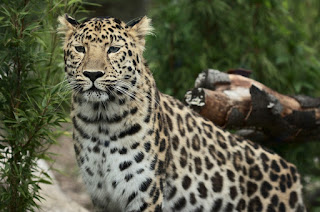As we know, Nature and Humankind exterminated countless species. Survival count of few rare animals like dinosaurs, Giant Teratorn and laughing OWL is dropped down to zero. Of course, none of them won't last forever, but it’s a shame we’ll never see some of the most magnificent animals in future. Here is the list of 10 animals which are about to extinct.


10.) Hawksbill Turtle:
Hawksbills declined globally by over 80% during the last century. Like other marine turtles, hawksbills are threatened by the loss of nesting and feeding habitats, fishery-related mortality, excessive egg collection, pollution and coastal development.
Despite their protection under CITES, there is still a large amount of trade in hawksbills products, and this probably constitutes the major threat to this type of species.
Status: Critically Endangered
Population Count: 20,000-23,000
Size: less than 1m in length, weighing 40-60kg.
Scientific Name: Eretmochelys imbricata.
9.) Sumatran Orang-utans:
Orang-utans are known as gardeners of the forest. They play an important role in seed dispersal and in maintaining the health of the forest ecosystem. Orang-utans are the world's largest tree-climbing mammals. But their forest habitat is rapidly disappearing in Indonesia and Malaysia, putting the life of Asia's only great ape in danger.
Status: Critically Endangered
Population Count: Approx. 7,300
Size: 4-5 feet
Scientific Name: Pongo abelii
8.) Sumatran Elephants:
Sumatran elephants feed on plants and also on deposit seeds wherever they are, contributing to a healthy forest ecosystem. They also share their forest habitat with many other endangered species, such as theSumatran tiger, rhino and orangutan, and countless other species that all benefit from an elephant population that thrives in a healthy habitat.
Status: Critically Endangered
Population Count: 2,400-2,800
Size: 5-9 feet at the shoulder
Scientific Name: Elephas maximus sumatranus
7.) Vaquita:
The world’s most rare marine mammal, Vaquita is on the edge of extinction. This little marine mammal wasn't discovered until 1958 and a little over half a century later, we are on the rim of losing them forever. Vaquitas are often caught and drowned by illegal fishing operations in marine protected areas within Mexico's Gulf of California. Nearly, half of the population has been lost in the last three years.
Status: Critically Endangered
Population Count: Fewer than 100 individuals
Size: 5 feet
Scientific Name: Phocoena sinus
6.) Pangolin:
These solitary, primarily nocturnal animals, are easily recognized by their full armor of scales. A pangolin will hide its head with its front legs, exposing its scales to any potential predator. If touched or grabbed it will roll up completely into a ball, while the sharp scales on the tail can be used to lash out.
Status: Critically Endangered
Death Count: killed nearly 200,000 btw 2011 and 2013
Size: 30 to 100 centimetres(12 to 39 in).
Scientific Name: Pholidota
5.) Mountain Gorilla:
As the name implies, mountain gorillas live in forests high in the mountains, at the height of 8,000 to 13,000 feet. They have thicker fur, and more of it, compared to other great apes. This fur helps them to survive in a condition where temperatures often drop below freezing. But as humans have moved more and more into the gorillas’ territory, the gorillas have been pushed further up into the mountains for longer periods, forcing them to face dangerous and sometimes deadly conditions.
Status: Critically Endangered
Population: 880
Size: 4 to 5 ½ feet when standing on two feet
Scientific Name: Gorilla beringei beringei
4.) Golden-Headed Langur:
The golden-headed langur is probably the most endangered of the Asian colobine. This sub-species occurs only on the Island of Cat Ba in the Gulf of Tonkin, northeastern Vietnam. The Cat Ba Archipelago is in the world famous Ha Long Bay, a spectacular karst formation that was invaded by the sea.
Status: Critically Endangered
Population: less than 70
Size: Male head-and-body length: 55 – 62 cm,
Female head-and-body length: 47 – 55 cm
Female head-and-body length: 47 – 55 cm
Scientific Name: Trachypithecus poliocephalus
3.) Javan Rhinoceros:
The Javan rhino has the smallest remaining population of any rhinoceros species. Due to pollution, natural disasters and diseases caused by a lack of genetic diversity and invasive species, the count of Javan rhinoceros is dropped drastically. To help, consider donating toward the effort of saving these species and to establish suitable, natural habitats in Indonesia for these beautiful creatures.
Status: Critically Endangered
Population: 60
Size: 4.6-5.8 feet
Scientific Name: Rhinoceros sondaicus
2.) Amur Leopard:
Only few Amur leopards exist in the world today, some left in the wild due to loss of habitat and poachers who hunt them for their coats.
Status: Critically Endangered
Population: 35
Size: 54-78 cms at shoulders
Scientific Name: Panthera pardus orientalis
1.) South-China Tiger:
The South China tiger population was estimated to 4,000 individuals in the early 1950s. In the next few decades, thousands were killed as the subspecies was hunted as a pest. The Chinese government banned hunting in 1979. By 1996 the population was estimated to be just 30-80 individuals. Now believed to be extinct in the wild.
Status: Critically Endangered
Population: 11(estimated)
Size: 7.5 feet
Scientific Name: Panthera tigris amoyensis
Most of these animals need our help to rebirth, especially since we're the reason so many species are dying off in the first place.
"Spread The Word, Share It, Save These Animal"
Most of these animals need our help to rebirth, especially since we're the reason so many species are dying off in the first place.
"Spread The Word, Share It, Save These Animal"











No comments:
Post a Comment